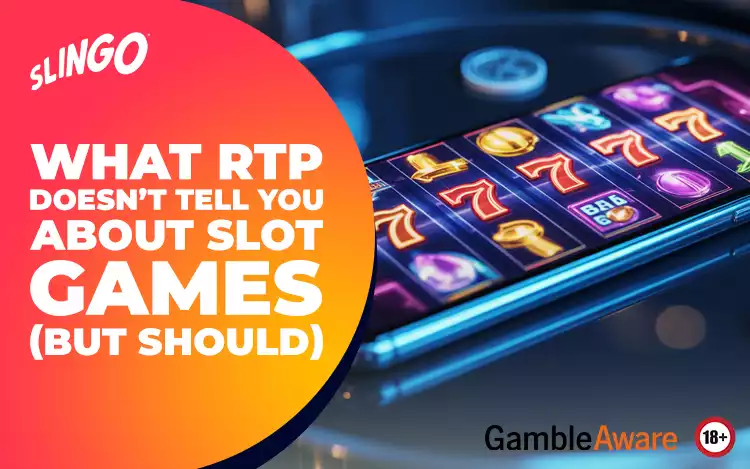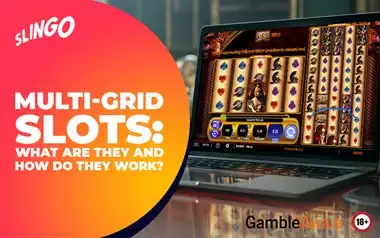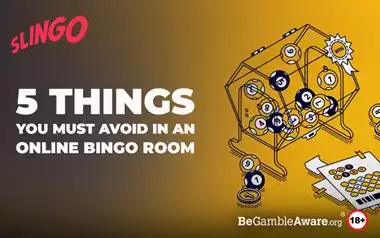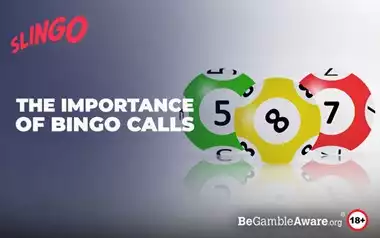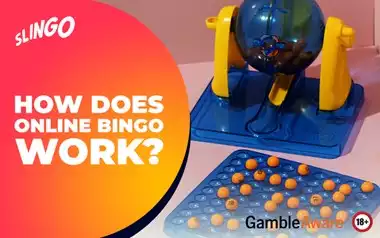When new players browse UK online slot titles, one of the first numbers they come across is the RTP, or Return to Player. It’s often treated as a deciding factor, with the assumption that a higher percentage guarantees better results. But RTP doesn’t tell the full story.
While RTP is an important benchmark, it reflects averages over millions of spins, not the outcome of your personal session. For short play periods, volatility, hit rate, and randomness have a far greater influence on how the game feels. In this article, we’ll unpack what RTP really means, why it can be misleading if taken alone, and what you should consider alongside it before choosing a slot.
*Terms and conditions apply.*
What RTP Is (and Isn’t)
RTP, or Return to Player, is the percentage of all stakes that a slot is programmed to return to players over time. A 96% RTP slot, for example, means that for every £100 staked across millions of spins, around £96 is theoretically paid back as winnings, with the remaining £4 going to the house.
But here’s what RTP isn’t: it’s not a guarantee of what any single player will see in a short session. Because the number is based on extremely large sample sizes, your 50 or 100 spins may bear no resemblance to that percentage.
Take Slingo’s Book of Dead slot as an example. With an RTP of around 96%, it’s often seen as a solid option. Yet in a short session, one player may hit multiple free spins rounds, while another may walk away with minimal results. The difference is down to chance and volatility, not RTP alone.
For more depth on the statistical gaps, you might find the blog on gaps in RTP understanding a useful resource, as it compares RTP vs hit frequency.
Why High RTP Isn’t Always Better
It’s easy to assume that picking a slot with a higher RTP automatically means better chances. While in theory, higher RTP games do return more over the long term, the difference is often marginal and almost invisible in short play.
For example, a slot with 97% RTP compared to one with 95% RTP only creates a two-point difference spread across millions of spins. In a single session, the variation from randomness can far outweigh that gap.
Take Slingo’s Starburst slot (RTP ~96.1%) and contrast it with Slingo Dead or Alive 2 (RTP ~95%). On paper, Starburst looks “better.” But in reality, the variance in Dead or Alive 2 means that some players will see higher payouts during bonuses, even if its RTP is slightly lower. Meanwhile, Starburst’s low volatility keeps payouts small and frequent, giving a steadier but often less dramatic feel.
This illustrates why high RTP doesn’t guarantee a “better” game. Other mechanics, like volatility and bonus frequency, have a stronger impact on enjoyment. For a closer look at how RTP interacts with specific game engines, check out the blog on RTP explained in Megaways, which explores why numbers behave differently in variable-reel slots.
Volatility, Hit Rate & Session Variance
If RTP isn’t the only number that matters, what should players consider? Three big factors shape the reality of any slot session: volatility, hit rate, and variance.
Volatility
It measures how risky a game feels. Low-volatility slots provide frequent but small wins, while high-volatility slots create fewer payouts but larger potential rewards. Slingo’s Rainbow Riches is a good example of a lower-volatility slot, while Dead or Alive 2 is firmly on the high side.
Hit rate / Hit frequency
Refers to how often a slot produces a winning spin. A hit rate of 25% means that, on average, one in four spins results in some kind of payout. This metric often matters more to players who prefer a steady pace.
Session variance
It is the lived experience of how outcomes cluster in short-term play. A high-volatility slot might deliver a big win after 50 spins, while another session may see 200 spins with no notable result.
These metrics, combined with RTP, provide a more realistic sense of what to expect. RTP may say “96% return,” but volatility and variance decide how that number plays out over time.
How to Use RTP the Smart Way
So, if RTP doesn’t guarantee outcomes, what’s the smart way to use it? Think of RTP as a starting filter, not a deciding factor.
Choosing a slot with an RTP below 90% will generally feel less rewarding in the long run. But once you’re in the 94–97% range, the difference is less about the percentage and more about the design of the game.
This means players should weigh RTP alongside other factors:
- Do you want a steady, low-risk game? Then focus on low-volatility titles with a solid RTP, like Starburst.
- Do you prefer high-risk, high-reward sessions? A high-volatility game with a mid-90s RTP, like Dead or Alive, may suit you better.
- Do you enjoy bonus features? Then look for slots where RTP combines with feature frequency to create excitement, such as Rainbow Riches.
In other words, RTP should guide expectations, not dominate them. And most importantly, remember that no percentage removes the role of luck. Every spin is independent, and outcomes are always random. For players curious about using RTP in broader strategies, the article on RTP’s impact on smart play covers how to keep these numbers in perspective without treating them as predictive.
Why This Matters for Players
Understanding RTP’s limits matters because it helps set realistic expectations. Believing that a 97% slot guarantees better short-term outcomes can lead to disappointment. Recognising that volatility, hit rate, and randomness play larger roles means you can choose games that align with how you want your session to feel.
If you like small, frequent results, pick low-volatility slot games. If you’re chasing the adrenaline of bigger but rarer wins, high-volatility titles are for you. And if you want a balanced mix, medium-volatility slots provide both steady play and occasional highlights.
By shifting the focus away from RTP alone, players can make more informed choices and avoid the frustration that comes from expecting guaranteed results.
Conclusion
RTP is a useful number, but it doesn’t tell the whole story. It represents long-term averages, not the outcome of your individual session. High RTP percentages don’t automatically make a game “better,” especially when volatility and hit rate can drastically change the experience.
The smartest approach is to use RTP as a guide alongside other factors like volatility, session variance, and feature design. Above all, remember that slots are games of chance. Wins are never guaranteed, and outcomes are always random.
By approaching RTP with clear expectations and a balanced view, you can enjoy UK online slots for what they are: entertaining experiences built on luck, variety, and design differences.
